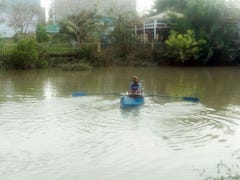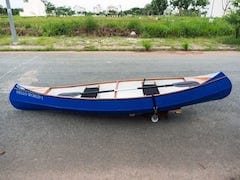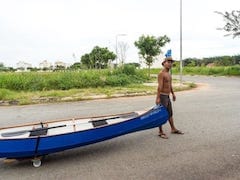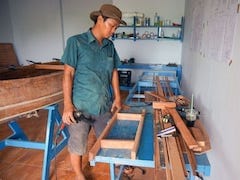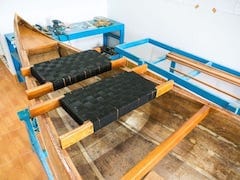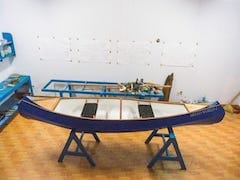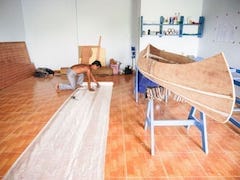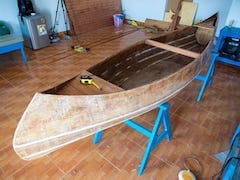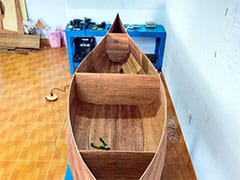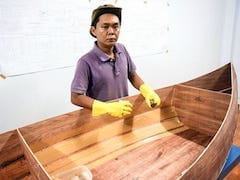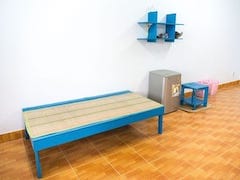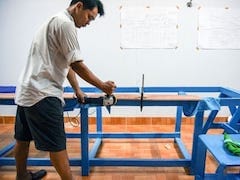Hello World – 1 has been finished, and trials showed it’s an excellent boat for solo paddling, but there’s still much work to be done to make full use of the canoe. Various miscellaneous things: a raincoat to protect the hull from weather at docking, a pole to push the canoe forward in shallow water, also to mount a signal light for occasional night going, an apparent wind indicator (wind vane) to better observe wind condition, a hand pump to drain water out when it rains, an anchor to allow going fishing anywhere on the rivers around my area without having to find a tree or a buoy to attach the canoe to… Most important of all, I want to make a rowing kit: an outrigger with two flotation units to help stabilising the boat, and two long oars.
It could take a couple of weeks to finish everything, since I’ve just started the design, with some undecided considerations still. Slowly I would got each items done, first is the spade – shape anchor, I casted 1.5 kg of lead into the hollow space underneath, to concentrate weight into the tip (the anchor is a bit oversize and overweight for such a small canoe, some wrong calculation, but I would use it anyhow). 2 meters of steel chain, plus about 30 meters of rope will be enough for an anchorage almost anywhere. There’s still lots of works to be done, with possible more and more delay (the holidays, Christmas and New Year are coming). Meanwhile paddling is still my main pastime in a fresh morning, or in a calm sunset, any day in the week 😀.
For the past few days, I really enjoy night paddling: familiar enough with the region to navigate in the dark, northern wind has cool down the nocturnal temperature considerably, and houses, buildings along the rivers’ banks have been decorated with all kind of colourful LED and neon lights for Christmas and New Year holidays, creating picturesque and splendid sceneries. I was paddling among a dark, silent, wide space, only the marvellous lighting and the stars above the sky. Unfortunately, my GoPro camera is not very good at shooting in low – light environment, I would try to post some pictures instead, just to show how beautiful our city is this season, especially in this specific place on Crescent lake near Starlight bridge (hồ Bán Nguyệt & cầu Ánh Sao).
The more paddling I was practising, the more do I realise how much boating (and paddling, rowing, sailing, etc…) resembles life, it’s a microcosm, a metaphor for our lives, for the struggles and enjoyments we make. Any destination is just a temporary target, as life is a long journey on which we struggle to make the next leap, reaching the next milestone, while trying to enjoy the scenes on the way. And that’s why we should take our thinking, our words, our intentions, our jobs… seriously, just to make the journey a more lovely, pleasant promenade… Well, that’s enough of philosophy, 😀 I need to stop dreaming here and return to the actual works, refine my calculations, sharpen my skills… lots of things to be done in the up – coming year, year of the horse.



















